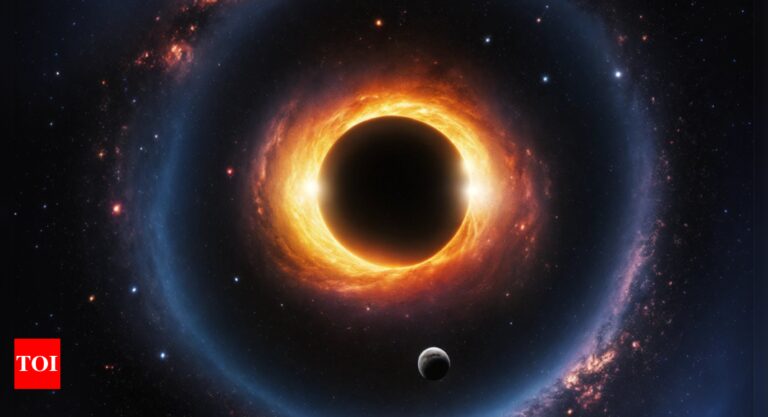
[ad_1]
NEW DELHI: The solar system housing Earth and its fellow planets has shown remarkable stability throughout its 4.5 billion-year history. However, new research on “twin” stars indicates that this stability is not universal across all planetary systems.
As per a Reuters report, researchers analyzed 91 star pairs from the same birth cloud, sharing similar sizes and compositions.These “twins” showed that a notable fraction had signs of consuming a planet, likely ejected from its regular orbit due to various disturbances.
The study focused on stars with comparable ages and masses, not gravitationally bound but moving in the same galactic direction. Disparities in chemical signatures, such as increased levels of iron, nickel, or titanium, hinted at a star ingesting a planet.
Fan Liu from Monash University in Australia, the study’s lead author, noted, “It’s the elemental abundance differences between two stars in a co-natal system,” highlighting this unique approach to identifying planetary consumption.
Seven pairs displayed one star with evidence of having swallowed a planet, potentially due to orbital disruptions by other celestial bodies.
Yuan-Sen Ting, a co-author of the study from the Australian National University, expressed astonishment at the frequency of such events, hinting at the potential instability of planetary systems compared to our own solar system. This instability could lead to planets being ejected and subsequently engulfed by stars.
The research utilized the Gaia space observatory and telescopes in Chile and Hawaii, examining stars ranging from 70 to 960 light years away from Earth.
While the study primarily suggests the engulfment of whole planets, it doesn’t rule out the absorption of planetary debris during formation phases, the Reuters report said.
The phenomenon of stars expanding into red giants and absorbing nearby planets is expected in stellar life cycles. However, the stars analyzed were in their prime, highlighting that system instability could be more widespread, impacting around 8% of the observed star pairs.
This instability suggests a significant number of planetary systems may experience chaotic dynamics unlike our solar system, potentially ejecting planets into space. Ting pointed out the broader implications, stating, “a non-negligible fraction of planetary systems are indeed unstable,” leading to a greater number of rogue planets than once thought.
This research aims to deepen our understanding of which planetary systems remain stable over time and which do not, adding a new dimension to the field of planetary dynamics.
As per a Reuters report, researchers analyzed 91 star pairs from the same birth cloud, sharing similar sizes and compositions.These “twins” showed that a notable fraction had signs of consuming a planet, likely ejected from its regular orbit due to various disturbances.
The study focused on stars with comparable ages and masses, not gravitationally bound but moving in the same galactic direction. Disparities in chemical signatures, such as increased levels of iron, nickel, or titanium, hinted at a star ingesting a planet.
Fan Liu from Monash University in Australia, the study’s lead author, noted, “It’s the elemental abundance differences between two stars in a co-natal system,” highlighting this unique approach to identifying planetary consumption.
Seven pairs displayed one star with evidence of having swallowed a planet, potentially due to orbital disruptions by other celestial bodies.
Yuan-Sen Ting, a co-author of the study from the Australian National University, expressed astonishment at the frequency of such events, hinting at the potential instability of planetary systems compared to our own solar system. This instability could lead to planets being ejected and subsequently engulfed by stars.
The research utilized the Gaia space observatory and telescopes in Chile and Hawaii, examining stars ranging from 70 to 960 light years away from Earth.
While the study primarily suggests the engulfment of whole planets, it doesn’t rule out the absorption of planetary debris during formation phases, the Reuters report said.
The phenomenon of stars expanding into red giants and absorbing nearby planets is expected in stellar life cycles. However, the stars analyzed were in their prime, highlighting that system instability could be more widespread, impacting around 8% of the observed star pairs.
This instability suggests a significant number of planetary systems may experience chaotic dynamics unlike our solar system, potentially ejecting planets into space. Ting pointed out the broader implications, stating, “a non-negligible fraction of planetary systems are indeed unstable,” leading to a greater number of rogue planets than once thought.
This research aims to deepen our understanding of which planetary systems remain stable over time and which do not, adding a new dimension to the field of planetary dynamics.
[ad_2]
